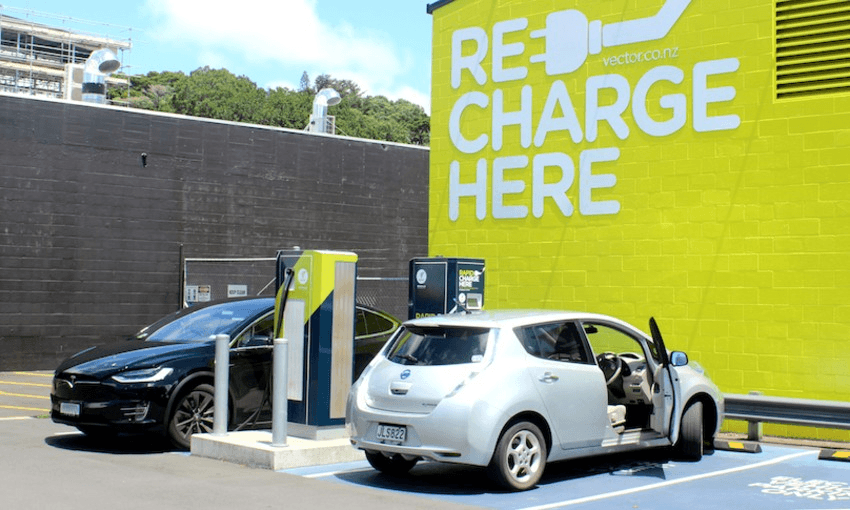An electric vehicle subsidy may look sensible on paper. But at the current prices, it might only make life harder for those who are already struggling financially, writes economist Ian Harrison.
When the Climate Change Commission released its advice earlier this year, its standout recommendation was that electric vehicle subsidies should be introduced as a matter of “urgency”. The commission was implying that electric car subsidies were somehow critical to New Zealand reaching its target of net zero carbon emissions by 2050, and that a subsidy would somehow overcome the road blocks that are standing in the way.
This is not true. The electric car revolution is coming and people will buy electric cars as a matter of course when their prices fall and the vehicles become more capable in terms of range and charging speeds. Several better and sometimes cheaper EVs are arriving now, and, in 10 years or so, electric vehicles will be the logical choice for most new car buyers.
However, right now they are very expensive. But that does not mean their purchase should be subsidised. It just means that we should wait for the cheaper vehicles. All a subsidy will do is provide a windfall gain for those who were going to purchase an electric vehicle anyway and encourage others to make an expensive purchase. This will contribute nothing to meeting the 2050 target, because by 2050 nearly all those expensive cars will have long since been scrapped.
The commission’s modelling also showed that the EV uptake rate would be higher in New Zealand than in Europe and Japan by 2040 without a New Zealand subsidy, rather undercutting the argument that providing a subsidy now is somehow necessary for the long term development of the EV market.
Just how problematic a subsidy will be is illustrated by a simple example: Suppose we have a car purchaser who wants to reduce greenhouse gas emissions. She could, for example, buy a Toyota Corolla hybrid at a cost of $33,590. Its real world fuel consumption is about five litres per 100km. So she could possibly be reducing her emissions by half compared to her existing car. Over five years she saves 7.5 tonnes of carbon emissions. Her other option is an electric vehicle, say a Tesla 3 that has the long range she requires but which costs $75000. Assuming she drives 15000 km a year then taking all of the costs of ownership into account over five years, this will cost her an roughly an additional $15,000 or $2000 per ton of carbon emissions reduced.
Or she could have stuck with the Corolla and used the $15000 to purchase offshore carbon credits. Readers might be familiar with the Air New Zealand offset scheme, which prices the carbon offset at less than $6 a tonne. At that price she could have reduced carbon by 2500 tonnes or by 333 times more than by buying the Tesla 3. Buying offshore carbon credits might not provide quite the same thrill as running round in a new EV, but sometimes doing good is better than just looking good.
In New Zealand carbon prices are higher, at about $39 a tonne at the time of writing, but the conclusion is the same. At the current prices, electric vehicles are a very expensive way of reducing net emissions.
As for EV subsidies, the commission suggests two options. The first is a direct government subsidy until such time as EV and combustion cars reach price parity. This could be very expensive but the commission does not say how expensive, even though they modelled the EV uptake and must have used a specific subsidy to do that. But it obviously matters from a fiscal perspective whether the subsidy is a chocolate fish or $25,000. Obviously the commission wanted to keep the potential fiscal cost quiet.
The second option is the “feebate” scheme. The commission is light on the details but it essentially involves taxing people who import internal combustion engine vehicles to pay for the subsidy for EV buyers.
This is a regressive tax regime. New Zealand has a two tier vehicle import market. Businesses and the better off can buy new vehicles so they have the option of buying more expensive EVs to avoid the tax and get a subsidy. People on lower incomes rely heavily on the Japanese used import market, often at a price point of $8,000 to $10,000. Buying any new car, let alone a new electric car at $50k or more, is well beyond their means. But through a subsidy and a tax on cheaper internal combustion engines, they will have to pay more for their cars to help fund the high income earners’ flash new EVs.
A feebate scheme will essentially boil down to a wealth transfer from Māngere to Remuera and from Porirua to Khandallah.
The reality is that the commission really hasn’t thought through the issues and is not providing sound evidence-based advice. In my opinion, it is more concerned with looking good rather than doing good.
